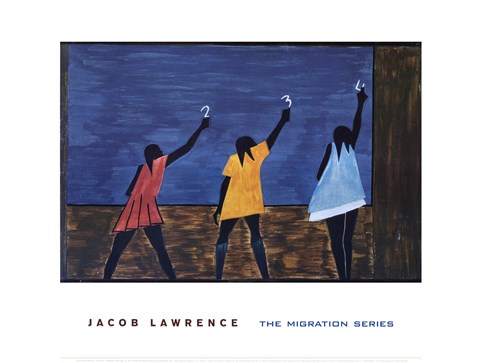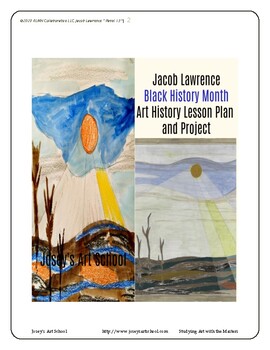

The paradox that the most effective propaganda for understanding the Negro problem should be visual truth is the essence of Jacob Lawrence’s work. For this young Negro has, in his own words, “tried to paint things as I see them.” In this lies his power as a painter; his perception and his comprehension are never literary, and his mode of expression is pictorial rather than illustrative. Lawrence’s pride (certainly merited) is the fact that his work has reached a wide public through acceptance of museums across the country, a tribute to a painter with a purpose rather than a propagandist.
Assigned to “Station Museum of Modern Art” by the Coast Guard for the opening of his one man show, he looked at his gouaches, some of which he had never seen hung before, with modest pleasure. The forthright paintings, devoid of bitterness or overstatement, are reflections of the sincerity and honesty of the man.
The way Lawrence sees is in terms of pattern in bright primary color, unmodulated (so that no black and white reproduction can do him justice), and in simplification of form. Form is simplified in order to articulate the essentials. Detail is suppressed except where it functions both as part of design and basic part of fact. His steep perspective generates immediacy.

Lawrence seems to have been born with a sense of pattern. “I always used to make designs as a kid,” he says. “Used to make masks, and designs for rugs—for anything. And I’ve always been interested in stage designs. I’ve even made some theater models.” To design state-sets is one of his post-war hopes, along with a Guggenheim, a trip to Mexico, a series of paintings on John Henry, and a try at silk-screens.

Born in Atlantic City, his mother brought him as a child to Harlem via Philadelphia. His first break, he thinks, was that his work “as a kid” came to the attention of Charles Alston, the Negro painter, who was then studying at Columbia. Alston urged him to come to the 135th Street Public Library classes. He continued studying with Alston and Henry Bannarn. The Federal Arts Project and beginning in 1941 a Rosenwald Fellowship three years running gave him his next opportunities.
Lawrence has painted Negro themes always, from historical series to contemporary life, which he considers “all part of the same problem, and its progress.” His honeymoon to New Orleans in 1941 was his first trip South, where Jim Crowism and the desperate economic plight of the Negroes became an emotional reality. “It didn’t surprise me,” he says, “but for the first time I really felt it.” On Coast Guard duty in the South later he started pen and ink drawings. “Maybe because of the way they think, Southerners look different—cold, inhuman,” he added, indicative of the man who feels through his eyes.
SOURCE: CLICK HERE

TO PURCHASE RESOURCES THAT HELP YOU TEACH ABOUT BLACK ARTISTS, CLICK HERE
